Have you ever had a feeling that you can’t quite explain? A feeling that seems to come out of nowhere and makes you act in ways that are unfamiliar or uncomfortable? If so, then you have experienced transference. Transference is a psychological phenomenon that often occurs in therapy, but can also happen outside of the therapeutic setting. In this blog post, we will explore what transference psychology is, how it develops, and how therapists deal with it. We will also hear from experts on the topic to get their insights on transference and countertransference.
Contents
Understanding Transference Psychology
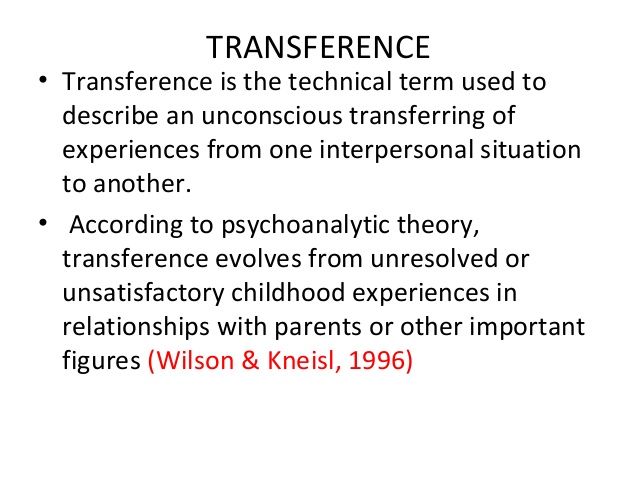
In order to understand transference, it is important to first understand the concept of transference psychology. Transference psychology is the study of the way we unconsciously redirect our feelings towards other people. It is the study of how we transfer our feelings and emotions onto other people. This includes not only our relationships with friends and family, but also our relationships with therapists.
Basic Principles of Transference
There are three basic principles of transference psychology:
- The first principle is that the feelings we have towards others are not always based on reality.
- The second principle is that these feelings are often a reflection of our own inner conflicts and desires.
- The third principle is that these feelings are often transferred onto the people we are closest to.
History And Development
The term “transference” was first coined by Sigmund Freud in his book, “The Interpretation of Dreams.” At the time, Freud believed that transference was a purely unconscious phenomenon. However, over time, it has been shown that transference can be both conscious and unconscious.
Knowing About Transference
Transference is a psychological phenomenon that refers to the way we unconsciously redirect feelings we have for people in our lives onto our therapist. For example, if you have a strong emotional attachment to your father, you may begin to feel those same emotions towards your therapist. Or, if you had an abusive parent, you may experience feelings of anger or resentment towards your therapist. However, transference is important because it can help us understand our relationships with other people. It can also give us insight into our own psychological makeup.
Types of Transference
There are three main types of transference: positive, negative, and erotic.
- Positive transference occurs when we have positive feelings towards our therapist, such as admiration, love, or trust.
- Negative transference happens when we have negative feelings towards our therapist, such as anger, resentment, or fear.
- Erotic transference refers to any type of sexual feelings that we may have towards our therapists, such as desire, lust, or obsession.
Example of Transference
- Positive Transference: An example of positive transference would be if you feel an intense admiration for your therapist and begin to view them as a role model.
- Negative Transference: An example of negative transference would be if you feel angry and resentful towards your therapist and begin to view them as the enemy.
- Erotic Transference: An example of erotic transference would be if you feel sexually attracted to your therapist and begin to view them as a potential romantic partner.
Unfolding Transference
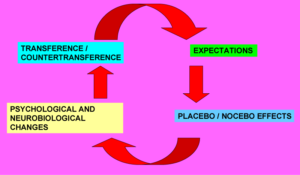
To understand transference, it is important to understand how it unfolds over time. Transference typically begins with an awareness of the therapist’s physical appearance. This is followed by an emotional attachment to the therapist, which can lead to feelings of love, hate, or obsession. Finally, the patient will transfer their feelings onto the therapist’s behavior.
Is It Conscious or Unconscious
There is no right or wrong answer when it comes to whether transference is conscious or unconscious. However, both the therapist and the patient need to be aware of it.
- If transference is unconscious, the therapist may not be aware of the way they are being perceived by the patient. This can lead to misunderstandings and conflict.
- On the other hand, if transference is conscious, both the therapist and the patient can work together to explore those feelings.
Transference Vs. Projection
It is important to note that transference is not the same as projection. Projection occurs when we unconsciously dump our feelings onto someone else.
- For example, if I am feeling angry and frustrated, I may project those feelings onto my partner and accuse them of being angry and frustrated with me.
- Transference, on the other hand, refers to the way we unconsciously redirect our feelings towards someone else.
Transference And Blank Screen
In some cases, the therapist may choose to act as a “blank screen.” This means that they do not react to the patient’s transference in any way. By remaining neutral, the therapist allows the patient to explore those feelings without any interference.
Explaining Transference in Therapy
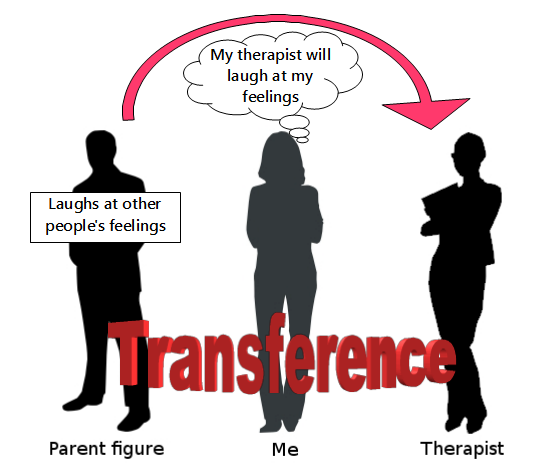
There is no one-size-fits-all explanation for transference. However, the therapist should take the time to explore those feelings with the patient. This can be a helpful way to gain insight into the patient’s past and current relationships.
Different Types of Transference in Therapy
Not all transferences will be the same. The therapist may see a variety of different transferences throughout treatment. It is important to be aware of these different types and to address them as they come up. There are four main types of transference in therapy:
- Identification: This occurs when the patient identifies with the therapist. They may see the therapist as a role model or as someone they want to be like.
- Idealization: This occurs when the patient views the therapist as perfect and infallible. They may idealize the therapist to the point where they are no longer able to see them as a real person.
- Devaluation: This occurs when the patient views the therapist as inferior or unworthy of respect. They may say things like “the therapist doesn’t know anything” or “they’re just trying to help.”
- Projective Identification: This occurs when the patient projects their feelings onto the therapist. For example, if the patient is feeling angry and frustrated, they may project those feelings onto the therapist and accuse them of being angry and frustrated with them.
Is Transference Good in Therapy
There is no right or wrong answer when it comes to transference. However, in some cases, it can be helpful for the therapist and the patient.
- If the therapist is aware of the transference and understands how it works, they can use it to help the patient gain insight into their past relationships.
- On the other hand, if the patient is aware of the transference, they can use it as a tool to understand their current relationships.
Does It Happen Outside of Therapy
While transference typically occurs in the context of therapy, it can also happen outside of therapy. For example, a patient may become attracted to their teacher or their boss. Also, any time we have a relationship with someone else, we are susceptible to transference.
NOTE: It is important to be aware of these situations and to address them if they arise.
Dealing With Transference
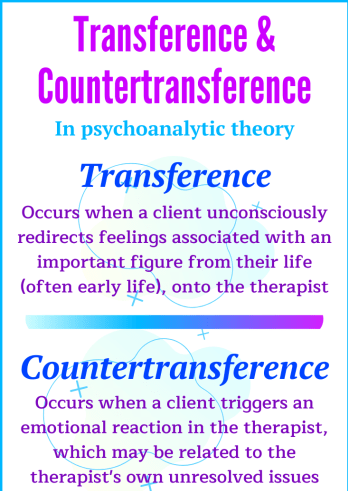
There are several ways that the therapist can deal with transference. In some cases, the therapist may choose to ignore it altogether. Alternatively, they may choose to confront it head-on. It is important to remember that there is no right or wrong way to deal with transference.
What Is Countertransference
Countertransference is the term used to describe the therapist’s reaction to the patient’s transference. For example, if the patient is transferring feelings of love onto the therapist, the therapist may feel overwhelmed and elated. Alternatively, if the patient is transferring feelings of anger or hatred, the therapist may feel angry or irritated.
How Do Therapists Deal With Transference
- First and foremost, it is important to be aware of it. Therapists should take the time to explore those feelings with the patient. This can help to prevent any misunderstandings or conflicts from arising.
- In some cases, the therapist may choose to confront the transference head-on. This can be a helpful way to explore those feelings with the patient.
- Alternatively, the therapist may decide to ignore it altogether. This can be a risky move, as it can lead to further confusion and conflict.
Overcoming Transference
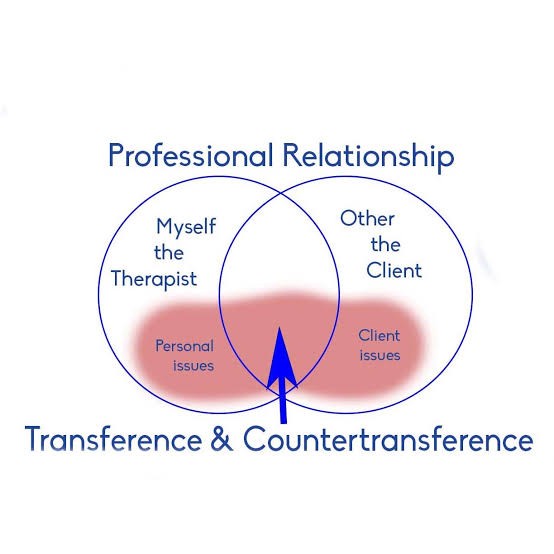
Transference can be a difficult thing to overcome. However, there are a few tips for both therapists and clients.
For Therapists
- Address it head-on: This is the best way to deal with transference. When the therapist addresses it openly, it allows both of them to explore those feelings safely and healthily.
- Set boundaries: The therapist can also set boundaries to help keep the transference in check. For example, they may ask the patient to refrain from discussing personal issues with them outside of therapy.
- Talk about it in supervision: If the therapist is feeling overwhelmed or confused by the transference, they can talk about it with their supervisor. This can be a helpful way to get some outside perspective.
For Clients
- Be aware of your feelings and how they may be impacting your interactions with others.
- Talk to someone about the way you’re feeling. This can help gain perspective on what’s going on.
- Focus on the present moment and try to stay in the here and now.
- Be patient and understanding with yourself. Remember that it takes time to overcome transference.
- Seek professional help if you feel like you’re struggling to overcome transference on your own.
Hearing From Experts
There is no one answer to the question of how to deal with transference. However, therapists and other experts have shared their thoughts on the matter. Here are a few tips from the experts:
“One of the most important things we can do as therapists is to be aware of our reactions to our patients. This includes both transference and countertransference reactions. It’s also important to be aware of how our reactions might be impacting the treatment process. If we’re feeling overwhelmed or elated by a patient’s transferences, it’s important to explore those feelings with the patient. Doing so can help us to gain a better understanding of their past and current relationships.”
-Shannon McFarland, LCSW
“Transference is a powerful force that can be very helpful or very harmful in therapy. It is a natural part of the therapy process. It’s important for therapists to be aware of it and to deal with it effectively. I typically explore transference with my patients and try to understand its origins. I also encourage my patients to be aware of their feelings and how they might be impacting their interactions with others.”
-Dr. Crystal I. Lee
Case Study
To illustrate the concept of transference, let’s take a look at a case study.
John is a patient who has been seeing a therapist for about six months. Throughout that time, he has developed feelings for his therapist. John describes these feelings as “intense” and “overwhelming.” He says that he can’t help but feel attracted to her and that he fantasizes about being with her.
The therapist should take the time to explore those feelings with the patient. This can be a helpful way to gain insight into the patient’s past and current relationships. Additionally, it can help the therapist to understand why John is feeling attracted to them. By exploring those feelings, the therapist can help John to understand and manage them.
Resources
There are many helpful resources on transference available to therapists, clients, and the general public. The following are some of the best:
Professional Resources
- The American Psychological Association (APA) has several resources on transference, including an overview, definition, and types of transference. They also provide helpful clinical examples and ways to deal with transference in therapy.
- The Association for Behavioral and Cognitive Therapies (ABCT) has a section on their website devoted to transference, which includes an overview, definition, types of transference, and clinical examples.
- The International Transference Network provides an online forum for therapists to share their experiences with transference, as well as several articles and resources.
- The Society for Psychotherapy Research has a resource page on transference that includes an overview, definition, types of transference, and clinical examples.
Client Resources
- The American Psychiatric Association has a fact sheet on transference that provides an overview and definition.
- The American Psychological Association has a fact sheet on transference that provides an overview and definition.
- The British Psychological Society has a guide to understanding transference that includes an overview, definition, and types of transference.
Books For General Public
There are several books on transference available to therapists and clients. Some of the best include:
- Transference by S. E. Goldberg
- The Transference Neurosis by Otto Kernberg
- Transference in Psychotherapy by Philip M. Bromberg
- Understanding and Treating Transference by Jon G. Allen
- Dealing with Transference: A Clinician’s Guide by Jeanne Watson Driscoll and Lawrence J. Friedman
Conclusion
Transference is a complex phenomenon that can be difficult to understand and deal with. However, it is an important part of the therapeutic process and should be addressed openly and honestly by both therapist and client. There are many helpful resources available on transference, both professional and client-oriented, which can provide valuable information and guidance for those working through this difficult but important process.
A Word From Therapy Mantra
Your mental health — Your psychological, emotional, and social well-being — has an impact on every aspect of your life. Positive mental health essentially allows you to effectively deal with life’s everyday challenges.
At TherapyMantra, we have a team of therapists who provide affordable online therapy to assist you with issues such as depression, anxiety, stress, workplace Issues, addiction, relationship, OCD, LGBTQ, and PTSD. You can book a free therapy or download our free Android or iOS app.


